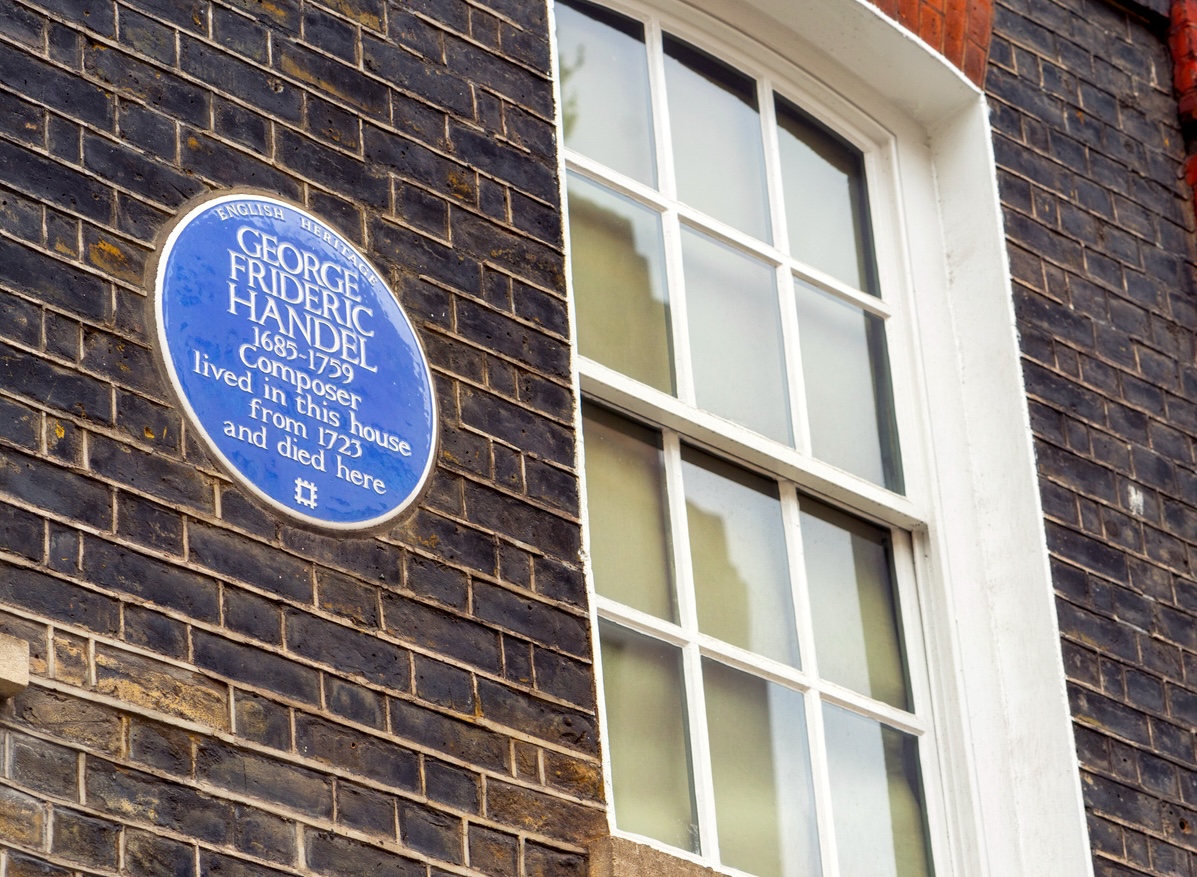Most people assume that once a blue plaque is installed, it’s there to stay. That is not always the case. Around 50 of the over 1,000 official plaques are no longer in situ on their original building – almost always because that building has gone. Now English Heritage, the charity I work for, is asking for help from the public to track down any of the lost plaques that may have survived.
In all likelihood, both early Byron plaques are completely lost – potentially somewhere within the foundations of John Lewis
In 1867, the Society of Arts inaugurated its new memorial scheme with a plaque to Lord Byron, marking the poet’s supposed birthplace at number 24 Holles Street, near Cavendish Square. A little over 20 years later, number 24 was demolished and the plaque was lost with it. The London County Council made a new plaque for Byron when they inherited the scheme, but war damage to Holles Street meant that plaque didn’t last much longer than the first. The Oxford Street branch of John Lewis department store – built in the 1960s – has occupied the site ever since.
The plaque was blue, as they are today, though many of the first tranche of plaques were terracotta or chocolate brown, which stand out less prominently but were apparently easier for ceramicists to make. Made by Minton Hollins and Co., the first Byron plaque was of encaustic ware, with a matt finish and a decorative border in which the words ‘Erected by the Society of Arts’ were enmeshed.
In all likelihood, both early Byron plaques are gone for good – potentially somewhere within the foundations of John Lewis, and all that remains of either is the hand-drawn London County Council design (English Heritage took over the scheme from the LCC in 1986).
There are others, though, that might yet be found. The engraver Charles Turner was commemorated by the LCC in 1924. Sometimes referred to as ‘the other Turner’, Charles’s plaque marked the Grade II listed building at number 56 Warren Street. His plaque hasn’t been seen since the house was re-fronted in the late 20th century and though there is a chance the plaque remains on the building, hidden from view, there is also a possibility that it was taken from the building site, too tempting a piece of memorabilia to resist.
English Heritage has around 20 plaques, safely kept in its archaeological stores at Wrest Park where visitors can book tours. These orphan plaques, as we call them, were returned to us when their buildings were demolished and there they will stay unless new addresses can be found for the notables they commemorate. Many more are missing though; most to demolition, remodelling or war damage.
Joseph Lister, pioneer of antiseptic surgery, was one such case. Lister was originally commemorated by the London County Council at 12 Park Crescent in Marylebone in 1915. The crescent was rebuilt in facsimile in the 1960s after war damage and a new plaque was commissioned; however, astonishingly, the original rectangular bronze tablet turned up after an appeal in The Lancet. It was re-erected in 1966, where it remained for 51 years. Unfortunately, its second disappearance during extensive building work in 2017 seems to be permanent, as we have heard nothing of that plaque since.
With Park Crescent no longer an option due to the long-established criteria that a building must ‘survive in a form that the commemorated person would have recognised’, English Heritage found that there was an alternative London home from Lister’s years studying at University College London. In the absence of the original plaque, we commissioned a new one, which was installed at 52 Maple Street (formerly 28 London Street), Fitzrovia last month.
It is a relatively common misconception that a blue plaque offers the same kind of protection to a building as a listing. It does not, though there is evidence to suggest that in some cases they have acted as a deterrent to demolition. But the number of lost plaques indicates that this is not always the case, and many would have undoubtedly been collateral damage during periods of rapid modernisation and architectural experimentation that characterised London during the 20th century. Quite a few plaques didn’t make it through the regenerative postwar years. Henry Handel Richardson (lost 1963); Francis Trevelyan Buckland (lost 1961); Arthur Sullivan (lost 1964); and Mary Somerville (lost 1968) to name a few. Another example is Warwick Crescent, in Little Venice, where the poet Robert Browning lived and worked between 1861 and 1887. It was while living here that he wrote his epic poem about a Roman murder trial, The Ring and the Book (1868). At the turn of the 20th century, the area around the street went into gradual decline and suffered overcrowding. This went on for decades until 1966, when the street was cleared of properties by the Greater London Council and rebuilt.
Astonishingly, the original rectangular bronze tablet turned up after an appeal in The Lancet
Nowadays we would always advocate for plaques to be returned to English Heritage and accessioned into our extensive collection of historic artefacts. These lost plaques are part of the story of human endeavour that the London blue plaques scheme has been dedicated to telling for the past 158 years. There is always a possibility that we can conserve and reuse them.
Some plaques have been lent or donated to other institutions for display: hence one of few recent losses – the plaque to Air Chief Marshal Hugh Dowding that marked his now-demolished home in Wimbledon – can be seen at the National Memorial Arboretum in Staffordshire. Our predecessors at the London County Council rehomed a number of recovered plaques: Labour leader George Odger’s plaque was presented to the Trades Union Congress in 1961; the engineer Thomas Telford’s plaque was donated to the Institution of Civil Engineers in 1959, and those to the actors William Charles Macready and Edmund Kean were both presented to the Theatre Museum in 1966 and 1964 respectively.
Other plaques have reappeared years later, with David Garrick’s early Society of Arts plaque appearing in a Woolley & Wallis auction in Salisbury in 2016, where it was bought by the Garrick Club on Garrick Street. It is likely that the plaque was removed from number 5 Adelphi Terrace before that section was demolished in 1936, but where it went after that is unclear. The Greater London Council decided upon an alternative address at which to commemorate the renowned actor in 1970, when they erected a plaque at Garrick’s Villa on Hampton Court Road.
Trying to track down lost plaques is a bit like looking for a needle in a haystack. Most of them have been missing for decades. But we still think it’s a worthwhile endeavour and are currently calling on the public to come forward with any information that may help us find out what became of those missing plaques. Each one is a puzzle piece, a part of the history of what is probably the oldest such commemorative scheme in the world.








Comments